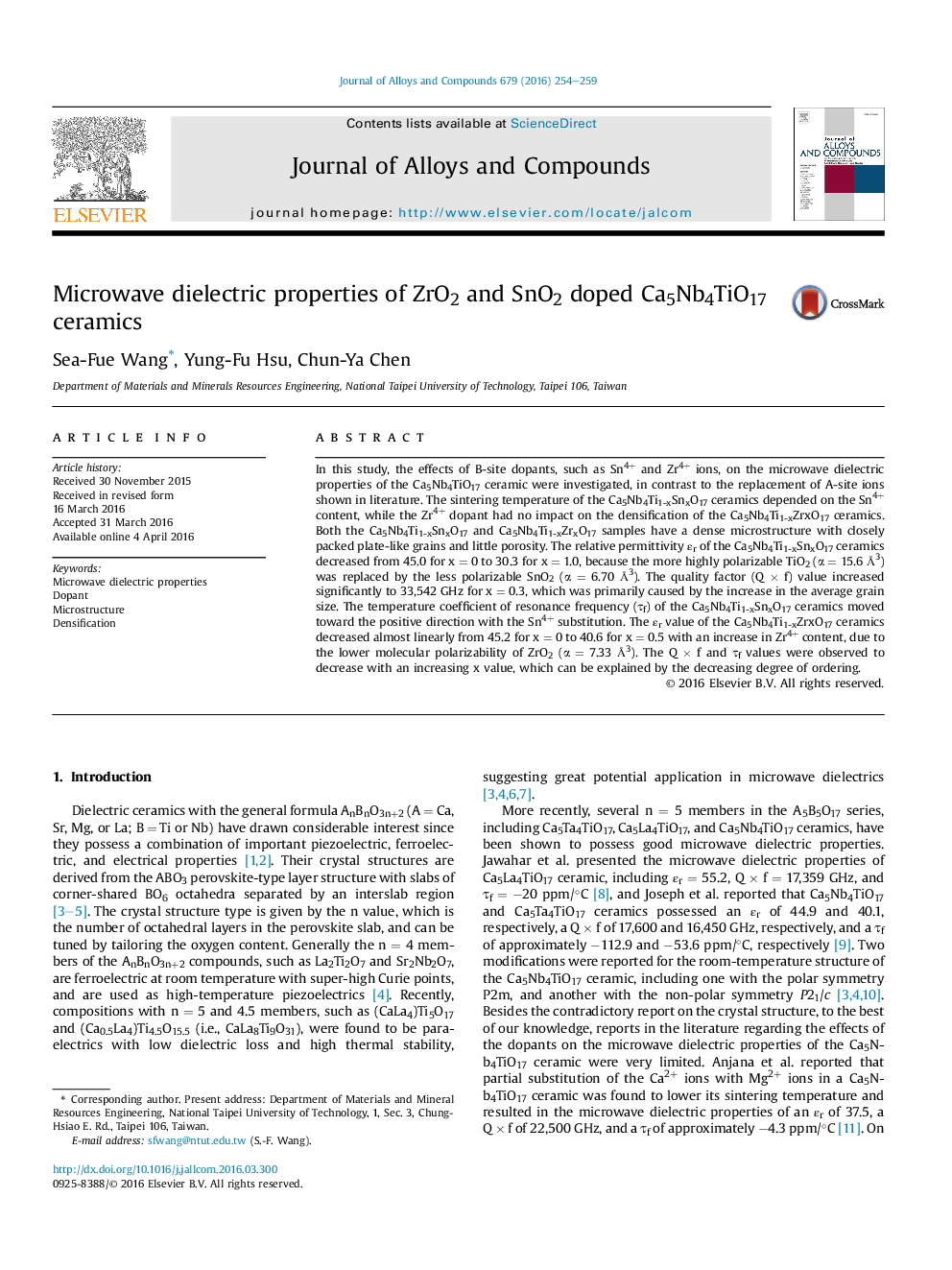| Article ID | Journal | Published Year | Pages | File Type |
|---|---|---|---|---|
| 1605663 | Journal of Alloys and Compounds | 2016 | 6 Pages |
Abstract
In this study, the effects of B-site dopants, such as Sn4+ and Zr4+ ions, on the microwave dielectric properties of the Ca5Nb4TiO17 ceramic were investigated, in contrast to the replacement of A-site ions shown in literature. The sintering temperature of the Ca5Nb4Ti1-xSnxO17 ceramics depended on the Sn4+ content, while the Zr4+ dopant had no impact on the densification of the Ca5Nb4Ti1-xZrxO17 ceramics. Both the Ca5Nb4Ti1-xSnxO17 and Ca5Nb4Ti1-xZrxO17 samples have a dense microstructure with closely packed plate-like grains and little porosity. The relative permittivity εr of the Ca5Nb4Ti1-xSnxO17 ceramics decreased from 45.0 for x = 0 to 30.3 for x = 1.0, because the more highly polarizable TiO2 (α = 15.6 Ã
3) was replaced by the less polarizable SnO2 (α = 6.70 Ã
3). The quality factor (Q Ã f) value increased significantly to 33,542 GHz for x = 0.3, which was primarily caused by the increase in the average grain size. The temperature coefficient of resonance frequency (Ïf) of the Ca5Nb4Ti1-xSnxO17 ceramics moved toward the positive direction with the Sn4+ substitution. The εr value of the Ca5Nb4Ti1-xZrxO17 ceramics decreased almost linearly from 45.2 for x = 0 to 40.6 for x = 0.5 with an increase in Zr4+ content, due to the lower molecular polarizability of ZrO2 (α = 7.33 Ã
3). The QÂ ÃÂ f and Ïf values were observed to decrease with an increasing x value, which can be explained by the decreasing degree of ordering.
Related Topics
Physical Sciences and Engineering
Materials Science
Metals and Alloys
Authors
Sea-Fue Wang, Yung-Fu Hsu, Chun-Ya Chen,
